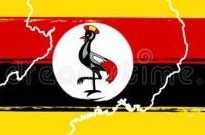
How Much Is A Sack Of Charcoal In Uganda
What Is Charcoal?
Charcoal is a lightweight black carbon residue produced by strongly heating wood in minimal oxygen to remove all water and volatile constituents. Charcoal is normally obtained from the burning of wood, peat, bones, cellulose, or other carbonaceous substances with little or insufficient air. It is an amorphous carbon in the form of highly porous microcrystalline graphite. When charcoal is used as an additive to clay, it can help save energy in brick production.
How Much Is A Sack Of Charcoal In Uganda
A sack of charcoal that was once sold at 20,000 Shillings now costs 32,000 Shillings.
How Much Is A Bag Of Charcoal In Uganda?
Average price per bag: 3,500 UShs.
What Are The Methods Of Charcoal Production In Uganda?
Charcoal production is done through a method called pyrolysis of biomass. Pyrolysis is defined as the irreversible chemical change brought about by heating the biomass in the absence of oxygen.
Where Is Charcoal Used The Most In Uganda?
The major use of charcoal is for outdoor cooking. The second largest use of charcoal is in industrial applications in the form of activated charcoal.
How Do I Start A Charcoal Business In Uganda?
Get a stand or shop in the market where you can offload and sell directly to customers. Carry out general marketing of your business. Locate areas where corn, plantain and fish are roasted and ask them if you could supply them with charcoal.
How Much Are Charcoal Briquettes In Uganda?
The price for briquettes is typically 35,000 USh tonne. This compares with around 30,000 USh tonne for firewood and 62,000 USh tonne for charcoal. Institutional stoves cost around 1.6 million USh.
How Many Types Of Charcoal Are There In Uganda?
Charcoal is usually produced by slow pyrolysis the heating of wood or other substances in the absence of oxygen. We at Indian charcoal make 4 types of charcoal which has both commercial and domestic uses.
What Are The Disadvantages Of Charcoal In Uganda?
Charcoal is expensive compared to wood. Production of charcoal is more time-consuming when compared to wood, making it a non-renewable source of energy.
How Long Does It Take To Make Charcoal In Uganda?
It must be lit by introducing some burning fuel into the chimney; the logs burn very slowly and transform into charcoal in a period of 5 days’ burning.
What Are The Problems Faced In The Use Of Charcoal In Uganda?
High demand led to deforestation. Charcoal was too fragile to be transported over long distance. Charcoal was hard and difficult to cut and transport.
Is Charcoal Business Profitable In Uganda?
The charcoal trade is especially brisk and lucrative in Uganda’s cities. Gerald Mbuse is an urban Kampala charcoal dealer, in the business for more than five years. Though he needs to leave the city and camp in rural areas to source product, he still makes good earnings.
Is Selling Charcoal A Good Business In Uganda?
Charcoal is an affordable energy source and generates rural jobs and incomes. However, the use of charcoal causes significant downfall of health due to indoor air pollution and slashing deforestation and forest degradation.
Is Charcoal A Business In Uganda?
Charcoal has been found to have some health related benefits. This makes it a business with a good level of demand. The charcoals are also not usually expensive as they even come for affordable prices for individuals to be able to get them.
What Is The Best Wood To Make Charcoal In Uganda?
Oak is the preferred wood but other hardwoods usually work well.
How Do You Make Charcoal Briquettes In Uganda?
Mix roughly the blend of soil and charcoal dust then add some water and mix it thoroughly. Mould the mixture into small round balls or any shape that is suitable for you. Put it in the sun to dry. If you want it the briquettes to look nice, you can add another layer of charcoal dust.
How Can You Tell The Quality Of Charcoal In Uganda?
Good quality lump charcoal typically has ash content of about 3%. Fine charcoal may have a very high ash content but if material less than 4 mm is screened out the plus 4 mm residue may have an ash content of about 5-10%. Buyers naturally suspect fine charcoal and it is difficult to sell (and use, unfortunately).
